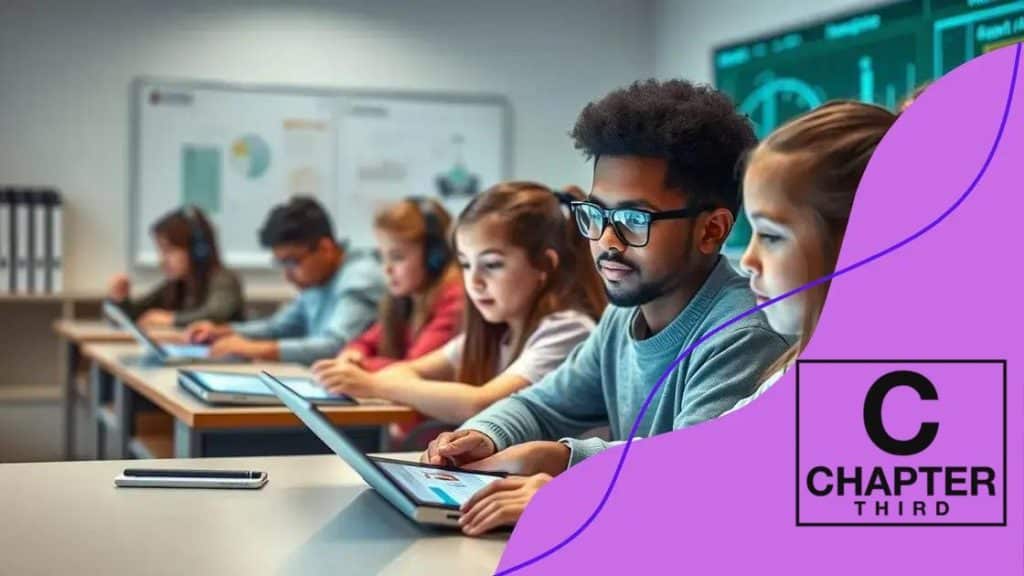Rise of AI-driven learning assistants: transforming education

The rise of AI-driven learning assistants transforms education by personalizing student experiences, enhancing engagement, and supporting educators through streamlined tasks and valuable insights.
The rise of AI-driven learning assistants is changing the educational landscape. Have you wondered how these tools enhance personalized learning? Let’s dive into their transformative effects.
Understanding AI-driven learning assistants
Understanding AI-driven learning assistants is crucial as they play a significant role in modern education. These innovative tools help personalize learning experiences, making education more accessible for everyone.
What are AI-driven learning assistants?
These assistants use artificial intelligence to provide tailored support to students. They leverage data to create personalized learning paths, adapting to individual needs and learning styles.
Key features of AI-driven learning assistants
- Personalized learning experiences
- Real-time feedback and assessments
- Resource recommendation based on student performance
- Accessibility features for diverse learning needs
With the ability to analyze data quickly, AI-driven learning assistants can offer immediate feedback to students. This timely response is essential for fostering a growth mindset. Teachers can monitor progress through the insights these tools provide, allowing for more effective teaching strategies.
Additionally, these assistants can help identify areas where students struggle. For instance, they can highlight topics that require more practice and suggest resources accordingly. This way, students can focus on their weak spots, enhancing their overall understanding.
Benefits for educators
Educators benefit immensely from integrating AI-driven learning assistants into their classrooms. They save time by automating administrative tasks, allowing teachers to focus on engaging with students more effectively.
These tools also encourage collaborative learning by facilitating interactions among students. As learners work together, they can share insights and deepen their understanding of the material.
Key benefits for students and educators
One of the most exciting aspects of AI-driven learning assistants is the remarkable benefits they offer to both students and educators. These tools are designed to enhance learning experiences, making education more effective and enjoyable.
Benefits for Students
Students can enjoy personalized learning experiences tailored to their unique needs. For example, AI-driven learning assistants often adapt their approaches based on individual learning styles and preferences.
- Customized learning paths to suit each student’s pace.
- Immediate feedback helps students improve in real-time.
- Engaging interactive content keeps students motivated.
- 24/7 availability supports learners outside traditional classroom hours.
Additionally, these assistants can target specific areas where students may struggle, providing focused support. By encouraging independent learning, students gain confidence and become more responsible for their education.
Benefits for Educators
Educators also derive significant advantages from implementing AI-driven learning assistants. They can save substantial time on grading and administrative tasks. This allows teachers to dedicate more time to interacting and guiding their students.
Furthermore, these technologies offer valuable insights into student performance through data analytics. Teachers can track progress and identify trends, allowing for more informed and effective teaching strategies. These insights lead to better classroom engagement and higher overall student success.
Ultimately, the synergy between students and educators enhances the educational ecosystem, creating a dynamic learning environment where everyone benefits. With the support of AI-driven tools, both students and educators can thrive.
Challenges in implementation and use

While AI-driven learning assistants offer numerous benefits, their implementation comes with challenges. Understanding these obstacles helps educators prepare for successful integration into classrooms.
Technical Limitations
One major challenge is the technical infrastructure required to support these tools. Schools need reliable internet access and compatible devices to ensure smooth operation. Without these resources, the effectiveness of AI-driven learning assistants can be severely hindered.
- Inadequate hardware can limit student access.
- Network issues can interrupt learning sessions.
- Integration with existing systems may pose difficulties.
- Data privacy concerns must be addressed.
Another aspect to consider is the training needed for educators. Teachers must feel comfortable using these tools to maximize their potential. Without adequate training, educators may struggle to implement the technology effectively.
Resistance to Change
Additionally, there can be resistance to adopting new technologies in education. Some educators may prefer traditional teaching methods, fearing that AI tools will replace their role.
This resistance can be overcome by demonstrating the value and effectiveness of AI-driven learning assistants. Engaging educators in training sessions and discussions about the benefits can help change perceptions and encourage adoption.
Moreover, it’s vital to foster an open mindset regarding technology in education. Collaboration among teachers, administrators, and tech experts can create a supportive environment for implementing these innovative tools successfully.
Future trends of AI in education
Looking ahead, the future trends of AI in education promise exciting advancements that can transform how students learn and teachers educate. As technology evolves, we can expect more innovative applications of AI in classrooms around the world.
Personalized Learning Experiences
One of the key trends is the growing focus on personalized learning experiences. AI can tailor educational content to meet the unique needs of each student. By analyzing data from individual performances, AI can provide customized resources and exercises.
- Adaptive learning platforms will become more common.
- AI algorithms will enhance lesson plans based on student progress.
- Real-time assessments will guide future lessons.
- Student engagement will increase with tailored content.
This shift toward personalization can lead to improved student outcomes, as learners receive support that aligns closely with their strengths and weaknesses.
Integration of Virtual and Augmented Reality
Another exciting trend is the integration of virtual reality (VR) and augmented reality (AR) technologies in education. These tools can create immersive learning experiences that enhance understanding and retention.
Imagine exploring historical sites or conducting science experiments in a virtual environment. With AI-driven learning assistants, these technological advancements can become accessible to a broader audience, enriching the educational journey.
AI as a Teaching Assistant
In the future, AI is likely to take on the role of a teaching assistant in classrooms. These systems can help with administrative tasks, such as grading, scheduling, and providing feedback, which allows teachers to focus on student interaction.
Moreover, AI can assist in creating dynamic classroom environments where students can learn collaboratively. By fostering teamwork and innovation, AI will help prepare students for the complexities of the modern world.
How to integrate AI into your learning environment
Integrating AI into your learning environment can enhance educational experiences for both students and educators. This integration requires careful planning and execution to ensure success.
Assessing Your Needs
The first step is to assess the needs of your learning environment. Consider the specific challenges you face and how AI can address them. This may involve identifying areas where students struggle or where teachers need more support.
- Gather feedback from teachers and students.
- Identify the subjects or topics that could benefit from AI assistance.
- Evaluate existing technology and infrastructure.
- Determine budget constraints for new tools.
Understanding these factors will help you choose the right AI tools and solutions.
Selecting the Right Tools
Once you have assessed your needs, the next step is to select the appropriate AI tools. Look for platforms that offer features tailored to your objectives. Consider whether you want personalized learning systems, assessment tools, or teaching aids that enhance classroom interaction.
Some popular tools include intelligent tutoring systems, learning management systems with AI capabilities, and virtual learning environments. Ensure the tools chosen align with the curriculum and support staff and students effectively.
Training and Support
Training is crucial for making the integration successful. Both teachers and students must feel comfortable using new technologies. Plan professional development sessions to familiarize educators with AI tools. Encourage them to explore the capabilities and seek assistance from tech support when needed.
Incorporating AI into your learning environment also involves continuous monitoring and evaluation. Collect feedback on how well the tools meet educational goals, as ongoing adjustments may be necessary to improve efficacy.
Integrating AI into education is not just a trend; it’s a transformative journey. As we embrace these tools, students and educators can enjoy enhanced learning experiences. Personalized education increases engagement, while teachers can focus more on facilitating discussions and less on administrative tasks. The future of education is bright, with AI leading the way to new opportunities. By preparing for this change, we can ensure a positive outcome for everyone involved.
FAQ – Frequently Asked Questions about AI-driven Learning Assistants
What are AI-driven learning assistants?
AI-driven learning assistants are tools that use artificial intelligence to provide personalized support to students, helping them learn more effectively.
How can AI improve student engagement?
AI enhances student engagement by providing interactive and tailored content that keeps learners motivated and actively involved in their education.
What challenges do schools face when integrating AI?
Challenges include technical limitations, resistance to change from educators, and the need for adequate training to use AI tools effectively.
How can teachers benefit from AI in the classroom?
Teachers can benefit from AI by saving time on administrative tasks, gaining insights into student performance, and focusing more on facilitating discussions.





